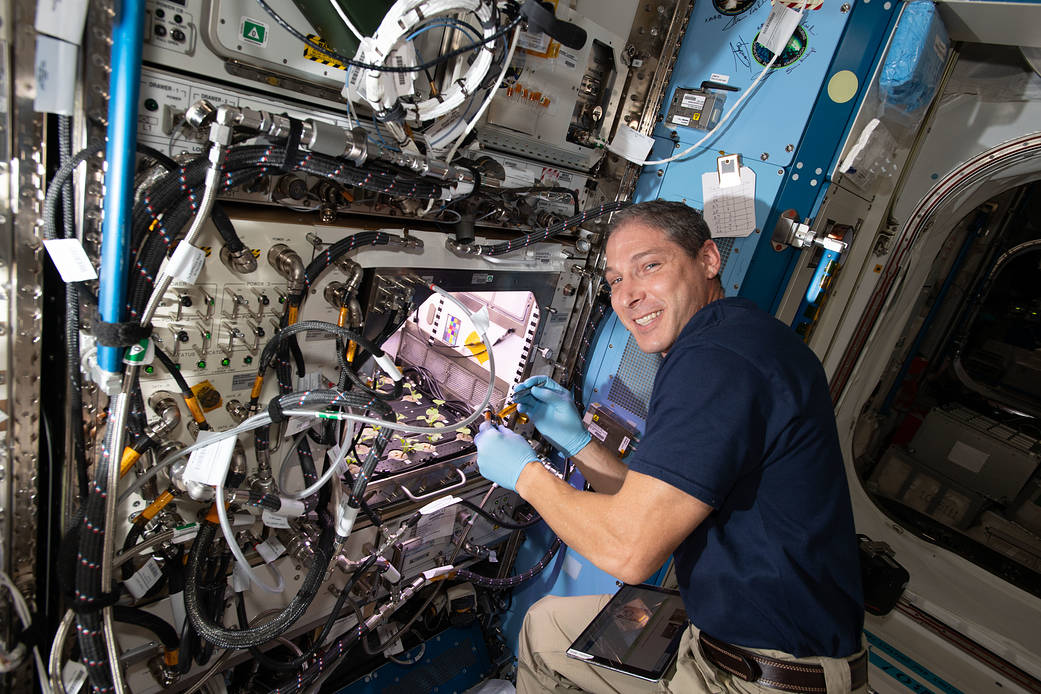NASA astronaut Michael Hopkins tends to radish plants growing for the Plant Habitat-02 experiment, which evaluates plant growth as well as nutrition and taste of the plants.
In the final two weeks of 2020, crew members aboard the International Space Station conducted dozens of scientific investigations, including studies of how plants grow in microgravity, tissue regeneration, time perception, changes in heart tissue gene expression, and a possible method for removing debris from space.
The astronauts are learning to grow fresh food in space. On long-duration space exploration missions such as to the Moon and Mars, astronauts need to be able to grow nutritious foods to supplement what they can bring from Earth. Plant Habitat-02 examines how radish plants (Raphanus sativus) grow on the space station in different types of light and soils, part of ongoing efforts to produce food in space. This model plant is nutritious, has a short cultivation time, and is genetically similar to Arabidopsis, a plant frequently studied in microgravity. In addition to helping optimize plant growth in space, this research evaluates the nutrition and taste of the plants. Crew members collected leaf samples during these weeks for analysis and tasting.
Image Credit: NASA
NASA宇航员迈克尔·霍普金斯(Michael Hopkins)为植物栖息地-02(Plant Habitat-02)实验准备萝卜类植物,该实验评估植物的生长情况、营养状况和味道。
在2020年的最后两周,国际空间站上的宇航员进行了数十项科学调查,包括研究植物如何在微重力下生长、组织再生、时间感知、心脏组织基因表达的变化,以及一种可能的太空清除碎片的方法。
宇航员们正在学习在太空中种植新鲜食物。在月球和火星等长期的太空探索任务中,宇航员需要能够种植有营养的食物,以补充他们从地球带来的食物。植物栖息地-02研究了萝卜类植物如何在空间站上不同类型的光照和土壤中是如何生长,这是在太空中生产食物的持续努力的一部分。这种模式植物营养丰富,栽培时间短,基因上与经常在微重力环境下研究的拟南芥相似。除了帮助优化植物在太空中的生长,这项研究还评估了植物的营养和味道。船员们在这几周内收集树叶样本进行分析和品尝。
影像来源:NASA







